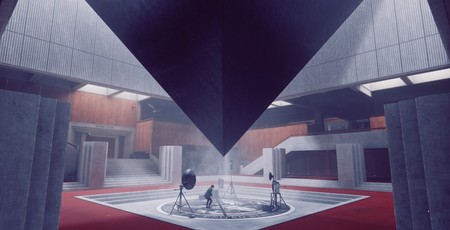
Price: £47.99
Developer: Remedy Entertainment
Publisher: 505Games
Platform: PC, PS4, Xbox One
Version Reviewed: PC
I absolutely loved Control, except for the moments when I absolutely hated it. Remedy’s latest is one of the most visually arresting and conceptually ingenious action games ever made. It boasts a stunning aesthetic, brain-melting environment design, a fascinating story, and the most spectacular combat I’ve seen this year. There’s no question in my mind that it’s superb and you should play it yesterday. But Christ on a flying bicycle that gives you haemorrhoids, there were times I wanted to tear my eyes out and throw them at the screen.
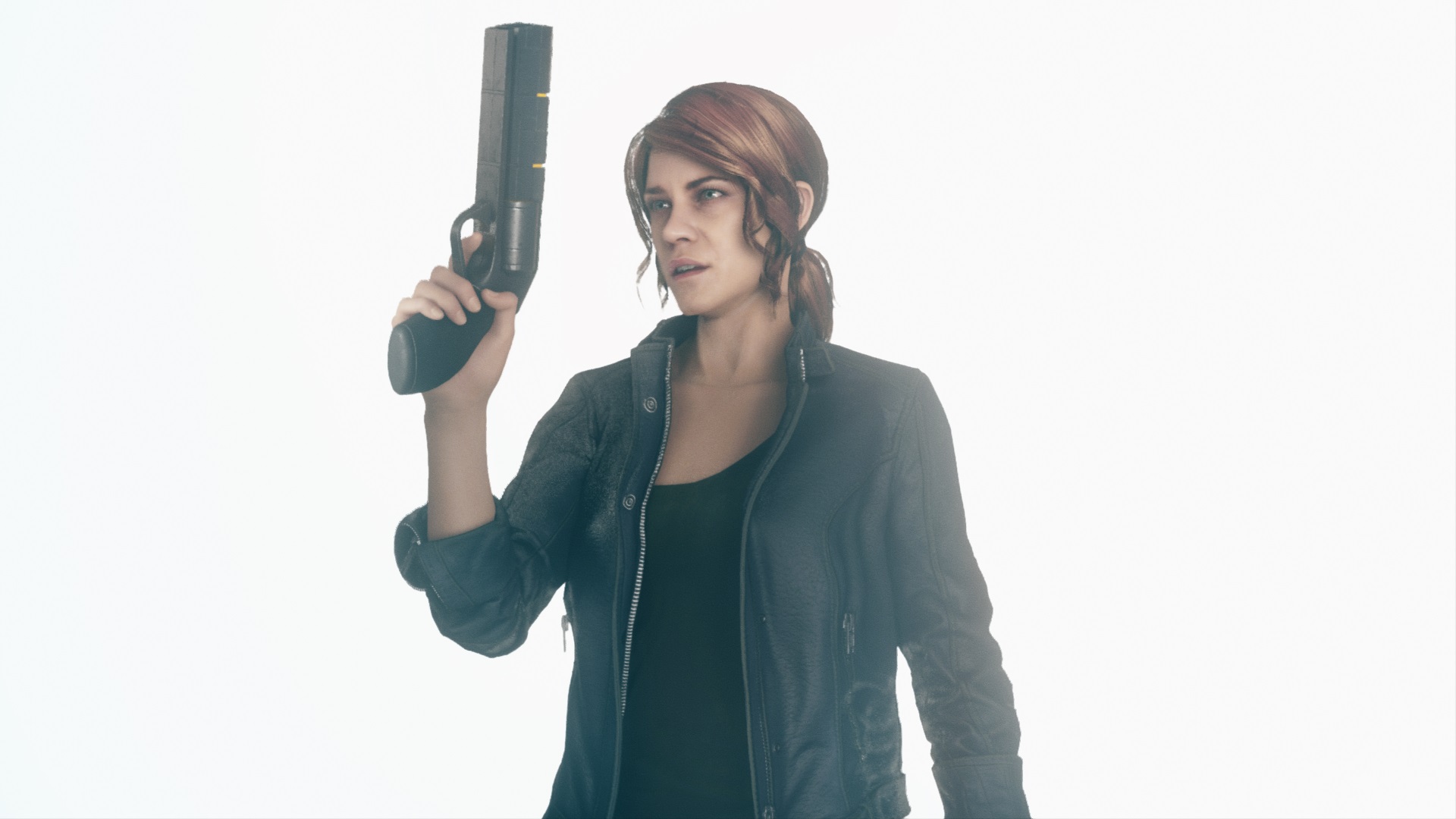
Control places you in the role of Jesse Faden, a young woman who walks into the Federal Bureau of Control having applied for a job as a janitor’s assistant. Within minutes of entering the building, however, Jesse has been chosen as the new director of the Bureau, which is being slowly overtaken by a mysterious entity that Jesse dubs the Hiss. Naturally, her new position as director means she’s responsible for finding out where the Hiss is coming from, and how to stop it.
It’s a strange and immediate opening, setting the tone for the bombardment of mysteries that is to follow. Developer Remedy Entertainment has always been driven by storytelling ambitions, but the studio also has a history of over-egging the narrative pudding, either over-explaining its ideas or failing to adequately do so. Control, by comparison, balances things, throwing you into a situation where questions abound, and letting you unpick the answers as much or as little as you please.
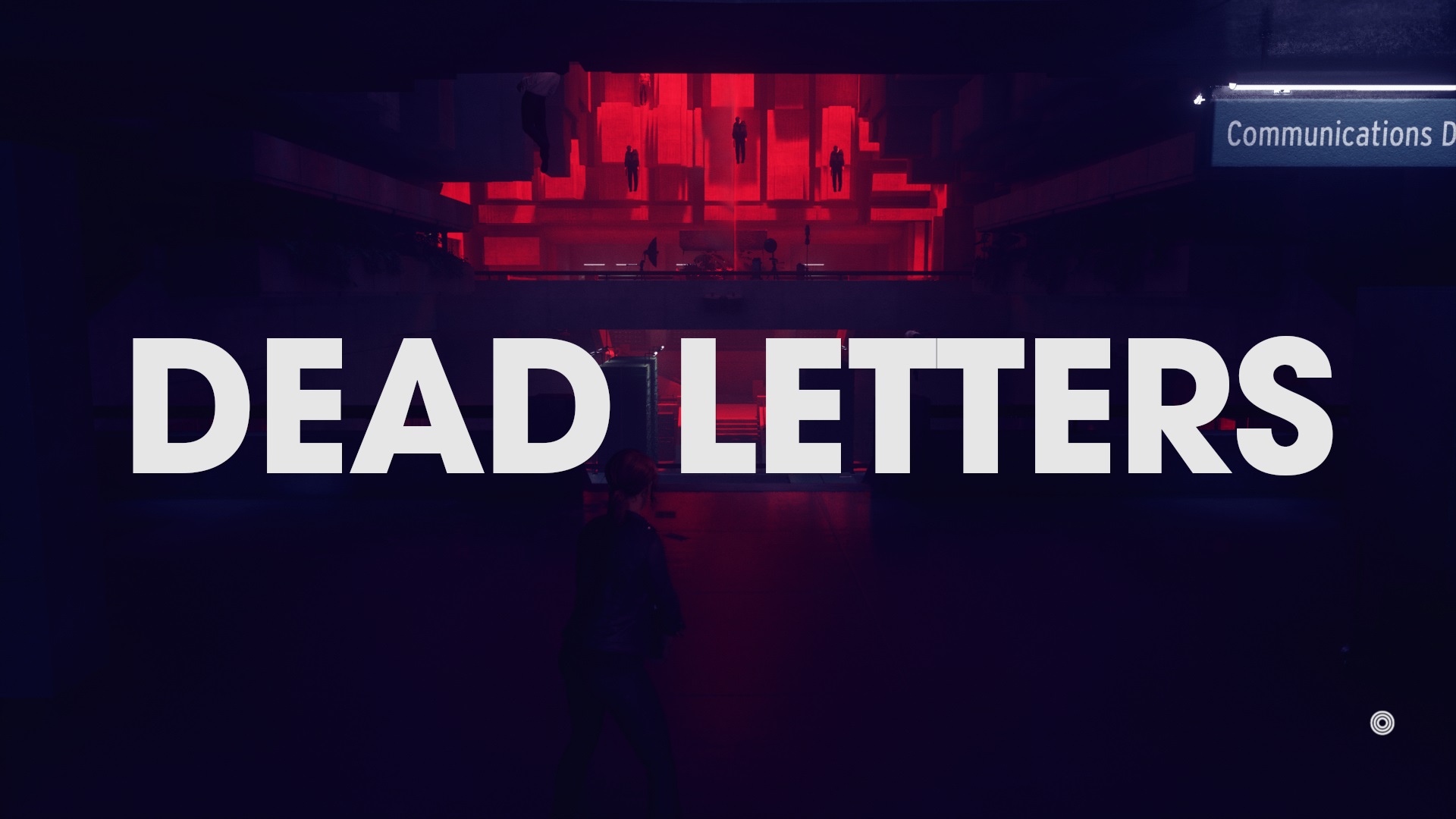
It’s helps that the setting is so gosh-darned appealing, both stylistically and thematically. The Bureau operates from a structure named The Oldest House, a New York monument to brutalist architecture with a casual relationship to reality, appearing only for people who truly want to find it. We never see the House from the exterior, but inside it is a twisting yet somehow orderly maze of concrete and glass, all prim offices, brightly lit cafeterias, and rigidly angled staircases. In certain areas, you could easily mistake it for an accountant’s office or a law firm.
In certain areas.
The oppressive order of the Oldest House is one Control’s smartest design choices, providing the perfect contrast to the Bureau’s raison d’etre. To briefly summarise, The Bureau collects, secures, and researches objects and items from the world imbued with strange and frequently dangerous powers. These objects usually look mundane, like a TV or a fridge or a mannequin, but each is imbued with a unique ability. It could be a localised teleport, or the ability to alter physical space. It could be far stranger than that. Either way, they’re divided into two different classes – Altered Items, and Objects of Power.
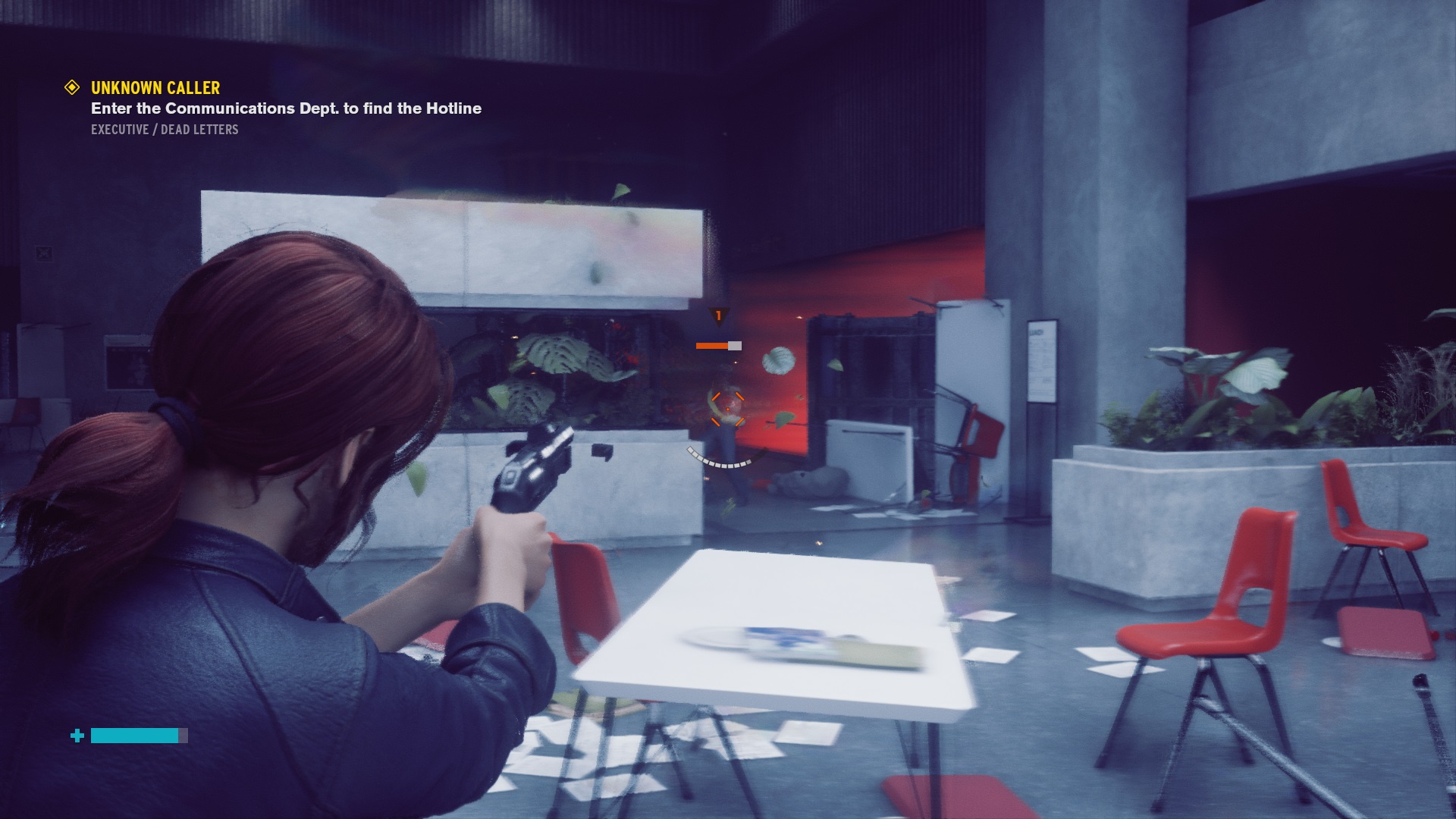
In some ways Control is SCP Foundation: The Game. Yet while Control’s inspirations are clear, Remedy does an incredible job of bringing that adopted mythology together and making its own contributions. One of my favourite areas in the Bureau is Dead Letters, a gigantic mail storage area four or five storeys in height, filled to the brim with letters sent to the Bureau across its decades-long existence. Some are obvious cranks either trying to get recruited by the bureau or simply playing a joke. Others are obvious pleas for help, while some are plain eerie or rambling nonsense.
Control’s world also proves the perfect channel for Remedy’s obsession with cross media. Reading through the documents that fill out the Bureau’s history and detailing the items the Bureau has retrieved is a huge amount of fun. Control also makes excellent use of real-life video. Doctor Hardman’s instructional primers are a great way to learn more about the Bureau’s research, while the interdimensional children’s TV show Threshold Kids is one of the creepiest things I’ve ever seen. It’s all far more neatly baked into the game than Quantum Break’s episodic dollops, and it all feels like it’s contributing to the atmosphere and world-building, rather than coming across as a vanity project.

As for where Jesse falls into all this, well, I won’t go into too many specifics. But she is gifted with the unique power to “cleanse” these “paranatural” objects, which includes areas that have been tainted by the Hiss. In some cases, she’s also able to absorb the abilities of the objects that she cleanses, using them to gain an edge against the adversaries she faces.
At its heart Control is an action game, one that is an accumulation of everything Remedy has learned between Max Payne and Quantum Break. The foundation of the combat is your service weapon, an Object of Power that can mutate to perform several different functions. These mostly fall into familiar categories – pistol, shotgun, machine-gun, etc. All of them are satisfying, although I found myself mostly using the Pierce railgun ability, as its power and range provided the best balance across all enemy types.
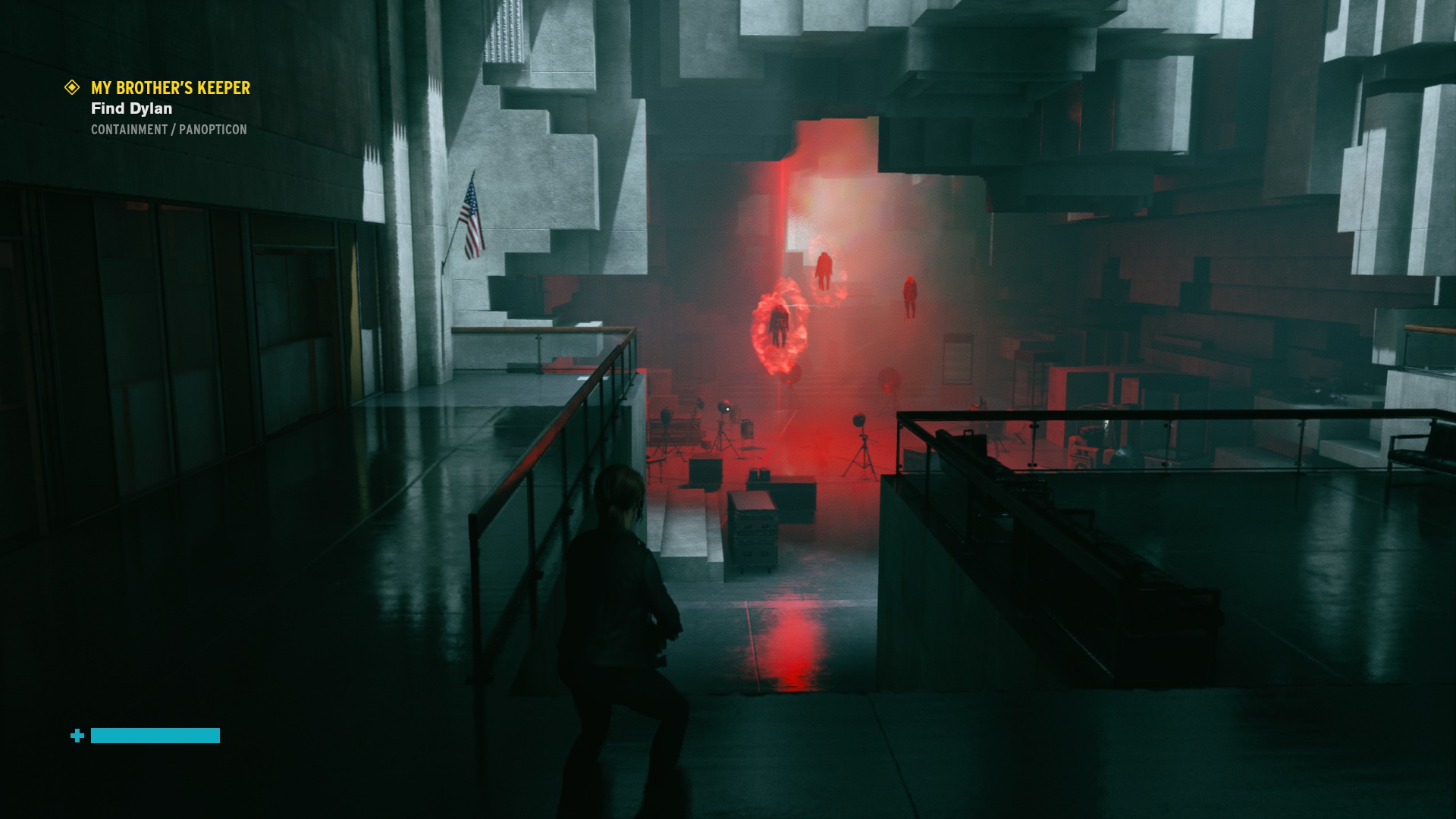
In addition, Jesse can wield a range of special powers, such as a short-range dodge and the ability to raise a wall of debris as a shield. By far the best power in her arsenal, however, is Launch. This is basically a telekinetic throw, Half Life 2’s gravity gun without the gun, and even more satisfying than Valve’s iconic toilet-chucker. From the ominous swooping noise it makes when you draw an item near, to the way the launched object tears through metal railing and glass windows on its way to its target, Launch is the single most enjoyable virtual weapon I’ve used all year.
Overall, Control is mechanically sound, although there’s not much from that perspective that’s new. What makes combat so thrilling, however, are the destructible environments. Control is the most fun I’ve had wrecking virtual rooms since Max Payne. Dash through a desk and you’ll turn it to splinters, chuck a grenade at a concrete plinth and watch as the whole thing collapses into great chunks of rubble. It’s an astonishing spectacle.
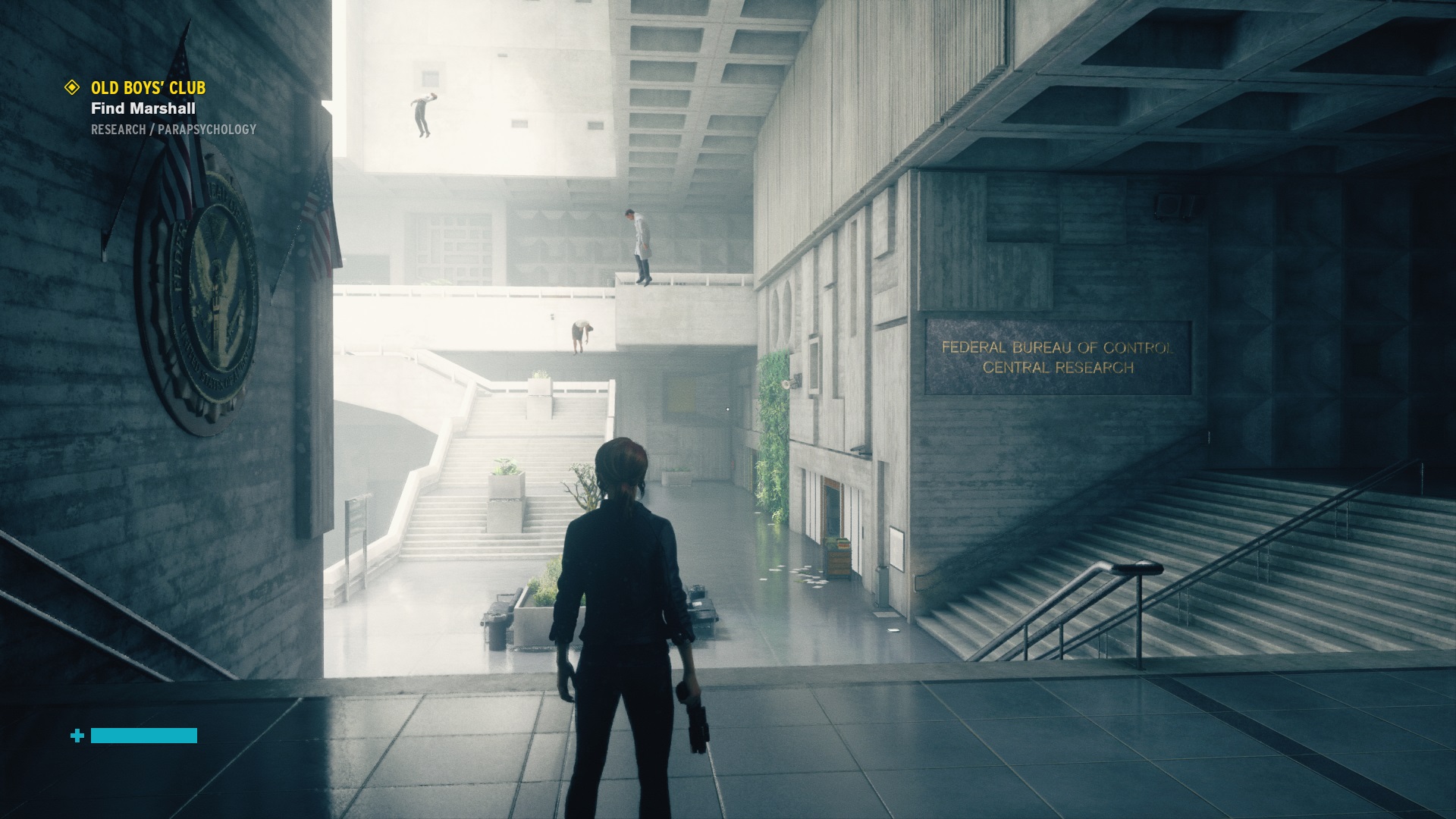
I love Control’s combat, but it’s around that system where most of the game’s problems lie. Control is by no means an easy game. You’re going to have to master your dodging in order to survive. Several encounters had me swearing all shades at the screen, notably several boss encounters that occur in the Containment area.
I don’t mind the difficulty; it’s certainly not as hard as Sekiro, which I loved. I do, however, mind the dreadful checkpointing, which often forces you to traipse through long areas before getting back into the fight. Further compounding the issue are some achingly long loading times – between 30 seconds and a minute depending on how far away from the control point you are. Oh, and there’s one particular boss fight where you can very easily fall through the floor, which kills you instantly, and it was this that had me ready to tear out my own eyes.

Poor checkpointing is not the only issue, however. While the core weapons and powers are all fine, the upgrade system surrounding them is lacklustre. The worst of this is the weapon and character mods, which provide a limited range of minor upgrades that mainly serve to clog up your inventory from about an hour into the game. But the upgrades themselves are also fairly tedious, and in the case of weapons, extremely expensive. By the time I’d finished the game, not one of my weapons was fully upgraded.
There were times Control frustrated the hell out of me. But it never bored me. Almost every room has something fascinating hidden inside, and there are several moments when the game’s twists into out-and-out weirdness took my breath away. It’s Remedy’s best game by any measurement, and, beyond those few rough edges, undoubtedly one of the highlights of the year.



MSI MPG Velox 100R Chassis Review
October 14 2021 | 15:04








Want to comment? Please log in.